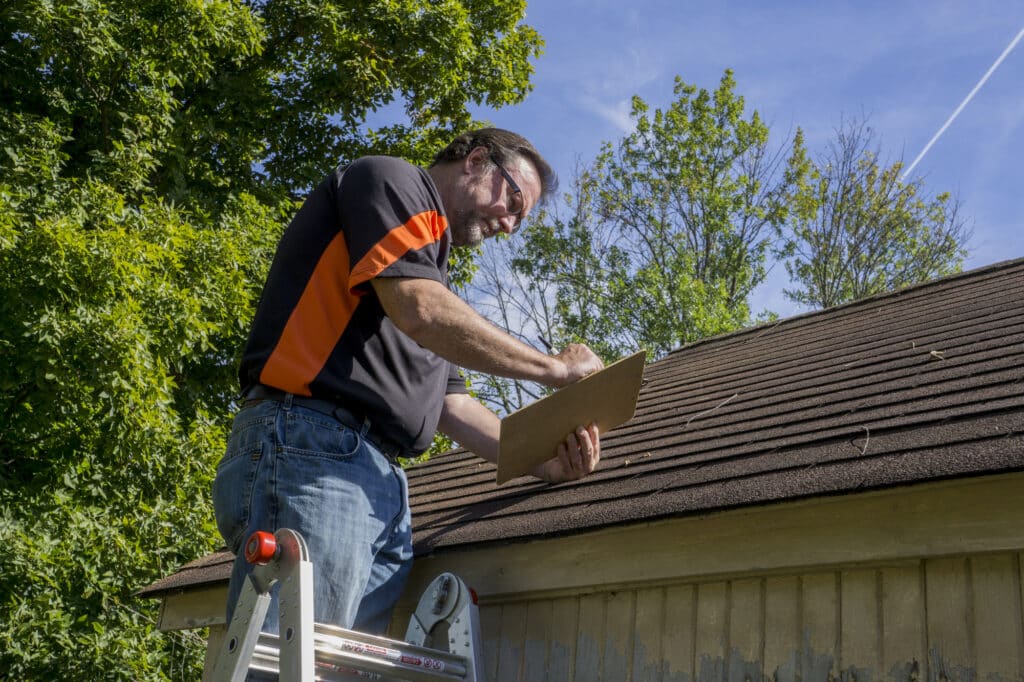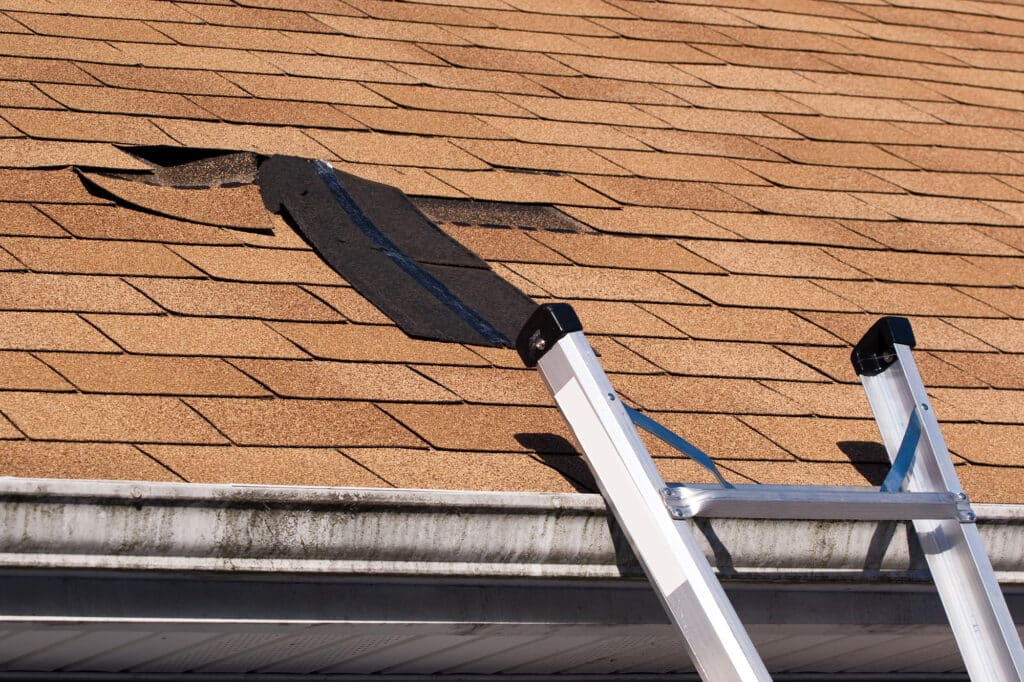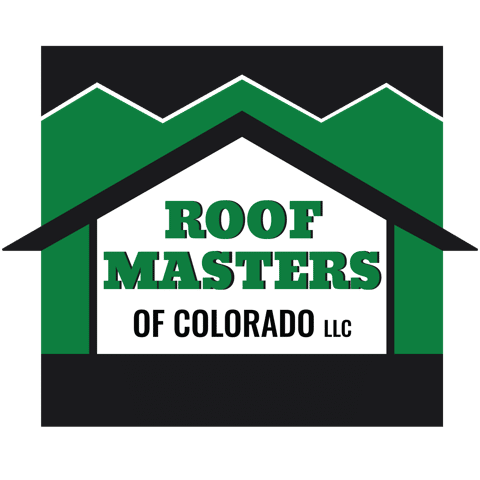Living in Colorado, we’re no strangers to severe weather conditions. From hail storms and heavy rains to high winds and even tornadoes, our homes—and particularly our roofs—are vulnerable to the elements. As a homeowner, it’s crucial to be prepared for storms and know how to react when your roof sustains damage. A damaged roof can lead to leaks, mold growth, and structural issues if left unaddressed, making it essential to act quickly in the aftermath of a major weather event.
At Roof Masters of Colorado, we understand the stress and uncertainty that comes with discovering storm damage to your roof. As a trusted roofing company serving the greater Boulder area for over 28 years, we’ve helped countless homeowners navigate the process of assessing damage, filing insurance claims, and restoring their roofs to pre-storm condition. In this blog post, we’ll share our expertise on what to do after a storm, how to identify roof damage, and when to call in the professionals.
Storm Damage Assessment
Safety First
Before you begin inspecting your roof for damage, it’s crucial to prioritize safety. If you suspect the structural integrity is compromised or see downed power lines, stay away from the affected areas and contact the appropriate authorities. Even if you only suspect minor damage, do not attempt to climb onto your roof during or immediately after a storm, as high winds, slippery surfaces, and loose debris can create a hazardous situation.
Structural damage can sometimes be difficult to spot yourself. If there’s any doubt, call a professional immediately.
Visual Assessment
Once the storm has passed and it’s safe to do so, walk around the perimeter of your house to conduct a visual assessment of your roof. Look for any obvious visible signs of damage, such as missing, curled, or cracked shingles, or shingles that have been torn away from the roof entirely. If you have a good vantage point, use binoculars to get a closer look at your roof’s surface. Make note of any visible damage and take photos for documentation purposes, as this can be helpful when filing an insurance claim.
Gutters, Vents, and Windows
In addition to your roof’s surface, be sure to inspect your gutters, gable vents, and other roofing accessories for dents, cracks, or other signs of damage. Check your windows for cracks, broken glass, or loose weather-stripping, as strong winds can cause debris to impact these areas.
Outside Areas
While you assess the exterior of your home, note any fallen tree limbs, damaged fence posts, or other structures that may have been impacted by the storm.
Storm and wind damage can wreak havoc not just on your roof but also your entire property. Flat surfaces like patios and decks should also be checked for signs of hail damage, as this can give you an idea of the size and severity of the hailstones that may have hit your roof.
Attic and Ceilings
Even if your roof appears undamaged from the outside, it’s essential to inspect your attic and ceilings for signs of leaks or water spots. Use a flashlight to check dark corners and hard-to-reach areas, paying close attention to light fixtures, ceiling fans, and other potential points of entry for water.
If you notice any damp spots, standing water, or active dripping, it’s a clear sign that your roof has been compromised and needs immediate attention.
Hiring a Professional Roofing Contractor
When it comes to assessing and repairing storm damage to your roof, it’s crucial to work with a trustworthy, experienced roofing contractor. While it may be tempting to tackle temporary repairs yourself or hire the first contractor who offers a low price, doing so can lead to subpar work, additional roof damage, and costly repairs down the line.
In the aftermath of a major storm, many roofing companies and repair services will compete for your business, often offering discounts or deals that seem too good to be true. Be cautious of these offers, as they may be a sign of a less reputable contractor looking to make a quick profit off of vulnerable homeowners.
To ensure that you’re working with a reliable professional, consider starting your search with independent roofing contractors who hold Preferred or Platinum Preferred membership levels in the Owens Corning Roofing Contractor Network. These contractors have demonstrated a commitment to ongoing training, customer satisfaction, and quality workmanship, making them a safe choice for your roofing needs.
A good roofing contractor will:
- Assess damage with a professional eye: An experienced contractor will know how to safely and thoroughly inspect your roof for damage, identifying issues that may not be visible to the untrained eye.
- Provide an estimate on repair costs: Once the damage has been assessed, your contractor should provide a detailed estimate of the roof repair costs, including materials and labor.
- Replace or repair your roof: Depending on the extent of the damage, your contractor will either repair the affected areas or recommend a full roof replacement. They will work with you to choose the best roofing materials for your home and budget, ensuring a long-lasting, durable result.
At Roof Masters of Colorado, we pride ourselves on being a trusted, reliable choice for homeowners in the greater Boulder area. With 28 years of experience and a commitment to exceptional customer service, we’ve built a reputation as one of the region’s premier roofing companies. As a woman-owned and operated business, we bring a unique perspective and attention to detail to every project we undertake.
Our A+ rating with the Better Business Bureau and certifications from industry leaders like Owens Corning and Malarkey are testaments to our dedication to quality and customer satisfaction. When you choose Roof Masters of Colorado for your storm damage repair needs, you can rest assured that you’re working with a team of skilled, knowledgeable professionals who have your best interests at heart.
Involving Your Homeowners Insurance Provider

After assessing the damage to your roof and contacting a trusted roofing contractor, the next crucial step is to involve your homeowners insurance company. Navigating your insurance claim process can be overwhelming, but taking the right steps from the beginning can help ensure you receive the coverage you’re entitled to.
Contact your insurance provider as soon as possible after discovering storm damage, as most policies have a limited window for filing an insurance claim. Have your policy number and documentation of the damage ready to expedite the process. Follow the requirements from your insurance adjuster closely to avoid your claim being denied or delayed.
Remember that your insurance company’s goal is to minimize its financial obligation while still providing the insurance coverage outlined in your policy. They may not always offer a settlement that fully covers the cost of repairs or replacement. This is where having a professional roofing contractor like Roof Masters of Colorado can make a significant difference.
Our team has extensive experience working with insurance companies and can help you navigate the claims process from start to finish. We provide detailed estimates, meet with insurance adjusters, and advocate on your behalf to ensure you receive the full coverage you deserve.
At Roof Masters of Colorado, we understand the stress and overwhelming nature of the insurance claims process. That’s why we offer comprehensive support and guidance to all of our clients, from the initial damage assessment through the final repair or replacement, ensuring you get the best possible service and maximum coverage from your insurance provider.
Preventing Future Storm Damage
While it’s impossible to completely eliminate the risk of storm damage to your roof, there are several proactive steps you can take to minimize the potential for harm and extend the life of your roofing system. By investing in regular maintenance, strategic upgrades, and preventive measures, you can help your roof weather even the toughest storms.
Regular Inspections
One of the most important things you can do to protect your roof is to schedule regular inspections and maintenance with a trusted roofing contractor. During these inspections, your contractor will look for signs of wear and tear, such as loose or missing shingles, cracked flashing, or damaged gutters. By addressing these issues early on, you can prevent them from turning into larger, more costly problems down the line.
Gutter & Downspout Maintenance
Another key aspect of roof maintenance is keeping your gutters and downspouts clean and clear of debris. Clogged gutters can cause water to back up and seep under your shingles, leading to leaks and water damage. By cleaning your gutters regularly (or hiring a professional to do so), you can ensure that water is being properly channeled away from your home’s foundation.
Roofing System Upgrades
In addition to regular maintenance, there are several upgrades you can make to your roofing system to enhance its resilience against storm damage. One option is to invest in impact-resistant shingles, which are designed to withstand high winds and hail without cracking or breaking. These shingles are typically made from a harder, more flexible material than traditional asphalt shingles and can provide an extra layer of protection for your home.
Another upgrade to consider is installing proper ventilation and insulation in your attic. Adequate ventilation helps regulate the temperature and moisture levels in your attic, preventing the formation of ice dams and other moisture-related issues that can damage your roof over time. Proper insulation, meanwhile, can help prevent heat from escaping through your roof, reducing the risk of snow and ice buildup during the winter months.
Tree & Property Maintenance
Finally, one of the simplest yet most effective ways to protect your roof from storm damage is to keep the trees around your home trimmed and well-maintained. Overhanging branches can scrape against your roof’s surface, causing damage to your shingles and providing a pathway for water to seep in. By trimming back branches and removing any dead or diseased limbs, you can reduce the risk of debris falling on your roof during a storm.
Weather Any Storm With Confidence
Dealing with storm damage to your roof can be a stressful and overwhelming experience, but by following the steps outlined in this guide, you can navigate the process with confidence and ease. Remember to prioritize safety, assess the damage thoroughly, and document everything for your insurance provider. When it comes time to hire a roofing contractor, choose a trusted, experienced professional like Roof Masters of Colorado to ensure that your home is in good hands.
By acting quickly and taking a proactive approach to roof maintenance and repair, you can minimize the risk of further damage and protect your home from future storms. Whether you need a simple repair or a full roof replacement, Roof Masters of Colorado is here to help. Contact us today for a free quote and put our decades of experience to work for you.









